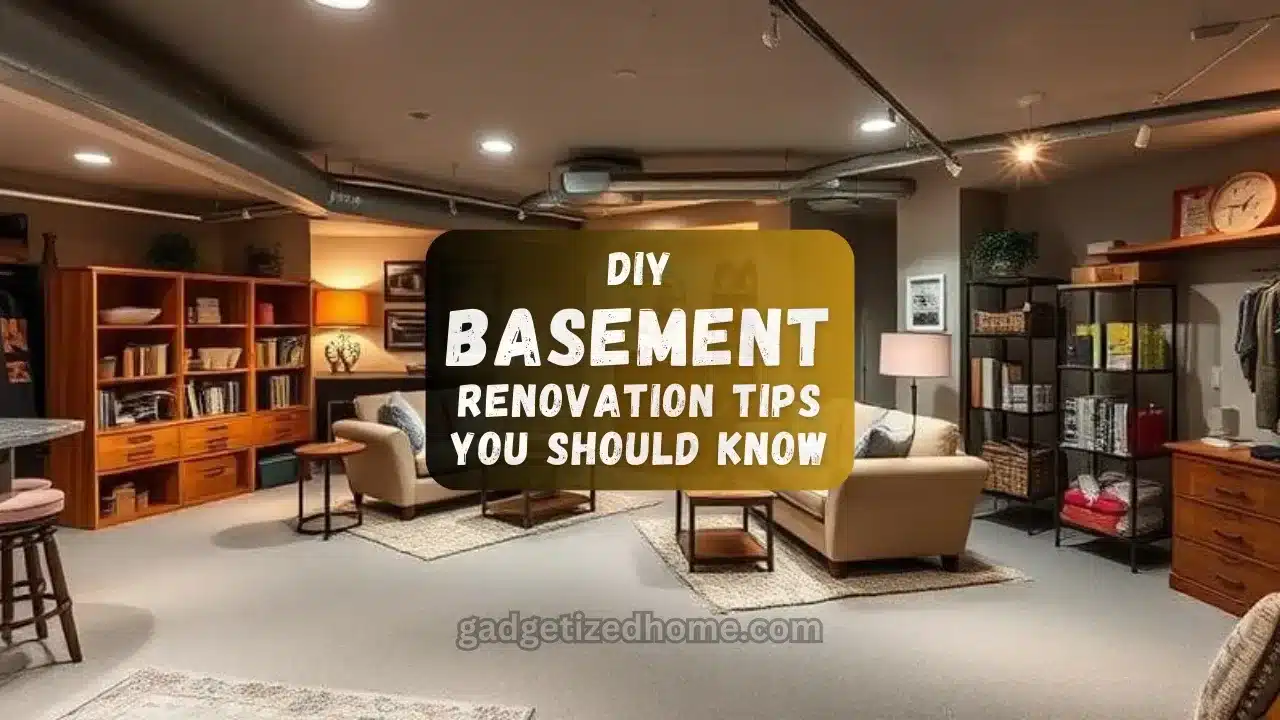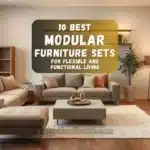Renovating your basement can completely transform your home. Whether you want a cozy guest room, a home office, or an entertainment area, a well-done basement renovation adds both functionality and value.
Taking a DIY approach to your basement renovation can save you a lot of money and give you the freedom to create the space exactly how you want it. However, there are some essential tips to know before diving in.
In this guide, we’ll walk you through key renovation steps, from planning and waterproofing to lighting and furniture choices. Ready to get started? Let’s dive in!
1. Planning Your Basement Renovation
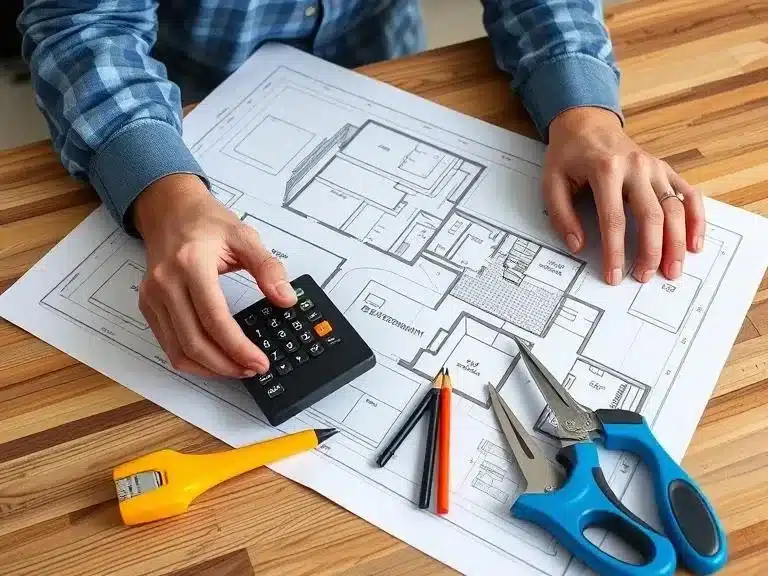
Before picking up any tools, planning is key. A well-thought-out plan saves time, money, and headaches down the road.
Assess Your Basement’s Condition
Start by checking for any signs of water damage, mold, or cracks in the walls and floors. Basements are prone to moisture issues, so it’s important to fix them first.
Use a moisture meter to check humidity levels and a dehumidifier to keep the air dry. If you find leaks, apply a waterproofing sealant before moving forward.
Get Necessary Permits
Many basement renovations require permits, especially if you’re adding electrical wiring, plumbing, or walls. Check local building codes to make sure your renovation is legal and safe.
Create a Layout and Budget
Decide how you want to use the space. Will it be a living area, a gym, or a home office? Sketch a rough floor plan to organize the space efficiently.
Budgeting is also important. List all expected costs, including materials, tools, and any professional help you might need. To save money, look for budget-friendly renovation kits that come with all the essentials.
2. Waterproofing & Insulation
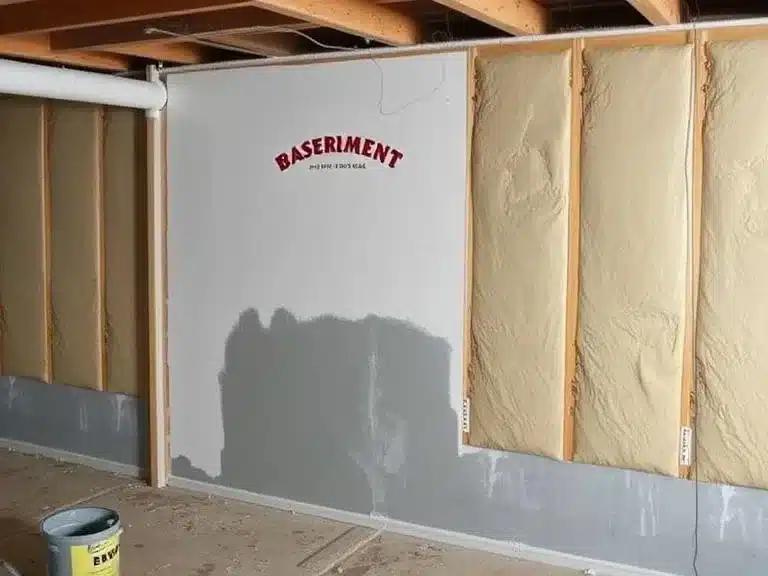
A dry basement is a livable basement. Moisture problems can cause mold, bad odors, and damage to your renovation work.
Fix Any Moisture Issues
If your basement has leaks or damp spots, apply waterproofing sealants to the walls and floors. Consider installing a sump pump if flooding is a concern.
Sealing cracks and using waterproof paint can also help prevent future moisture issues.
Install Proper Insulation
Basements tend to be colder than the rest of the house. Proper insulation keeps the space warm in winter and cool in summer.
There are different insulation types to choose from:
- Foam board insulation – Great for moisture resistance.
- Spray foam insulation – Seals gaps and improves energy efficiency.
- Fiberglass insulation – This is Affordable but needs a vapor barrier to prevent moisture buildup.
For the best results, look for thermal insulation boards that are easy to install and effective in basement environments.
Once your basement is dry and insulated, you’re ready to move on to the next steps!
3. Electrical & Lighting Setup
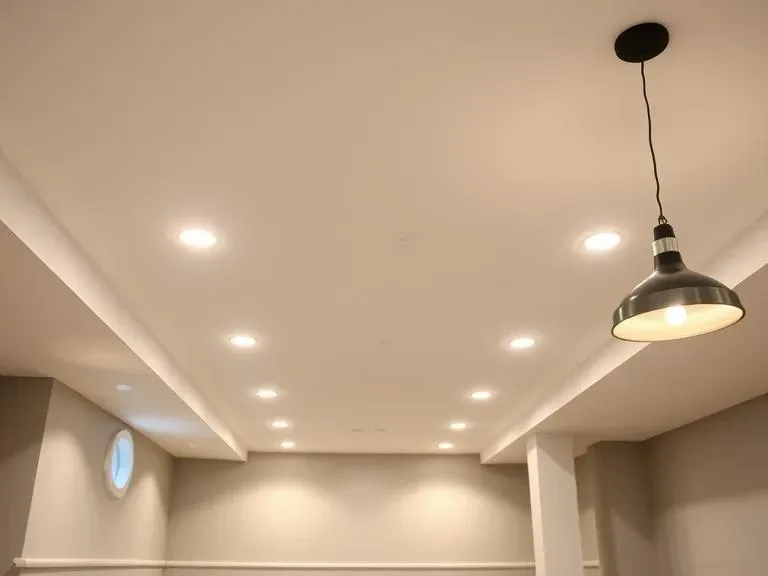
Good lighting can make a basement feel bright and welcoming. Since most basements have little to no natural light, a proper lighting plan is essential.
Plan Electrical Work Carefully
If your basement doesn’t have enough outlets or wiring, you may need to run new electrical lines. If you’re comfortable with basic electrical work, you can install DIY wiring kits. However, for major electrical changes, hiring a professional is the safest option.
Use a circuit tester to ensure all wiring is safe before installing lights or outlets.
Choosing the Right Lighting
Since basements lack windows, layering different light sources is important. Here are some great options:
- Recessed LED lights – Perfect for low ceilings and bright illumination.
- Track lighting – Adjustable and great for highlighting different areas.
- Wall Sconces – Add a stylish touch and save space.
- Motion-sensor LED lights – Energy-efficient and convenient.
For a smart touch, consider Wi-Fi-controlled smart bulbs to adjust brightness and color with an app.
4. Flooring Options for Basements
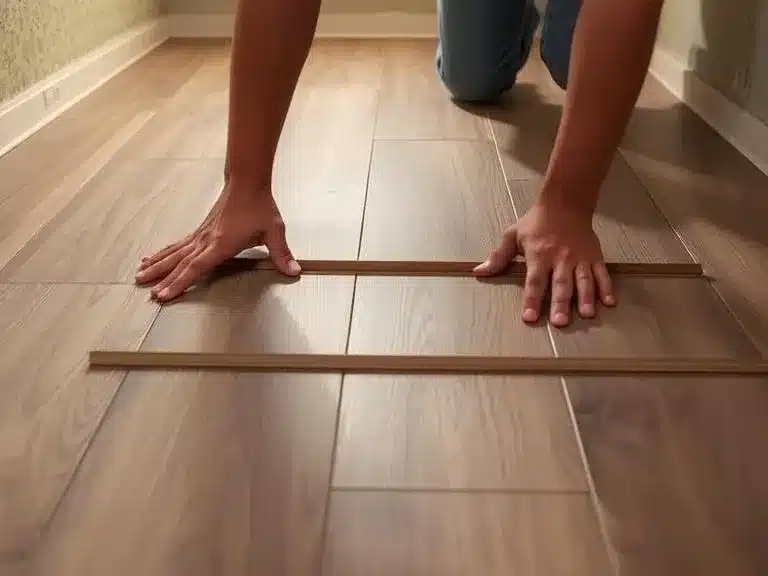
Choosing the right flooring is important because basements are prone to moisture. Some flooring options handle damp conditions better than others.
Best Flooring Choices for Basements
- Vinyl plank flooring – This is Waterproof, durable, and easy to install.
- Laminate flooring – This is Affordable but requires a moisture barrier.
- Epoxy coating – This is Great for a sleek, modern look and water resistance.
- Carpet tiles – They add warmth but need moisture control.
Avoid hardwood, as it can warp due to humidity. If you want a wood look, go for waterproof vinyl planks.
DIY Installation Tips
Most flooring types can be installed without professional help. Here are some useful tools:
- Floor cutters – For trimming vinyl and laminate.
- Adhesives and underlayment – These are Essential for securing floors.
- Leveling tools – To prevent uneven surfaces.
For a quick upgrade, self-adhesive vinyl planks are a great option since they stick directly to the floor and require minimal tools.
5. Walls & Ceiling Upgrades
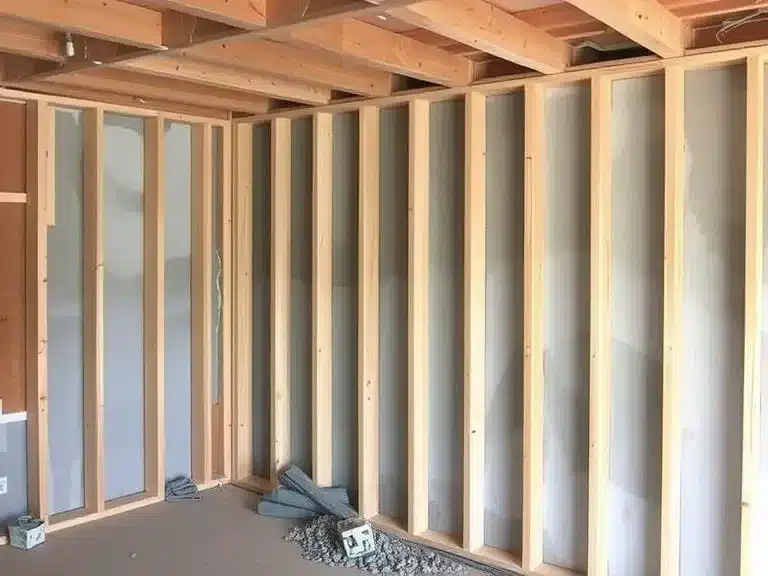
A finished basement needs sturdy walls and a ceiling that enhances the space.
Framing & Drywall Installation
If you’re adding new walls, start framing them with wooden or metal studs. Then, install drywall panels and finish with paint or wallpaper.
For soundproofing, consider acoustic drywall panels. If you want an easier option, wall paneling/repairing kits offer a stylish look with minimal effort.
Ceiling Solutions
Basement ceilings are often low and may have exposed pipes or beams. Here are some options to improve the look:
- Drop ceilings – Great for hiding wires and pipes while providing easy access.
- Drywall ceilings – They offer a clean finish but require more installation effort.
- Painted exposed beams – A trendy industrial look with minimal work.
For better noise control, use acoustic ceiling panels. These reduce the sound from upstairs and create a quieter space.
With the walls and ceiling complete, your basement will start to feel like a real living area!
6. Heating & Ventilation
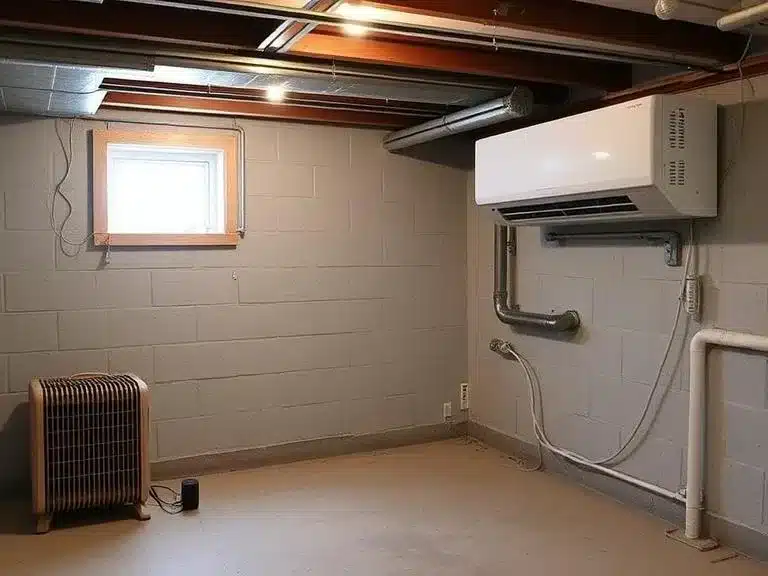
Basements can feel cold and stuffy, so proper heating and ventilation are essential for comfort.
Choosing a Heating Solution
- Space heaters – Ideal for small areas and easy to use.
- Radiant floor heating – A luxurious option that keeps floors warm.
- Ductless mini-split systems – These provide both heating and cooling.
If your home’s HVAC system doesn’t reach the basement, installing Dreo Space Heater can be a simple solution.
Improving Airflow & Ventilation
Poor ventilation can lead to moisture buildup and musty odors. Here’s how to keep the air fresh:
- Install ventilation fans to improve airflow.
- Use a dehumidifier to control moisture.
- If possible, add vents or windows for natural ventilation.
A smart thermostat can also help regulate temperature and humidity levels efficiently.
7. Storage & Organization Solutions
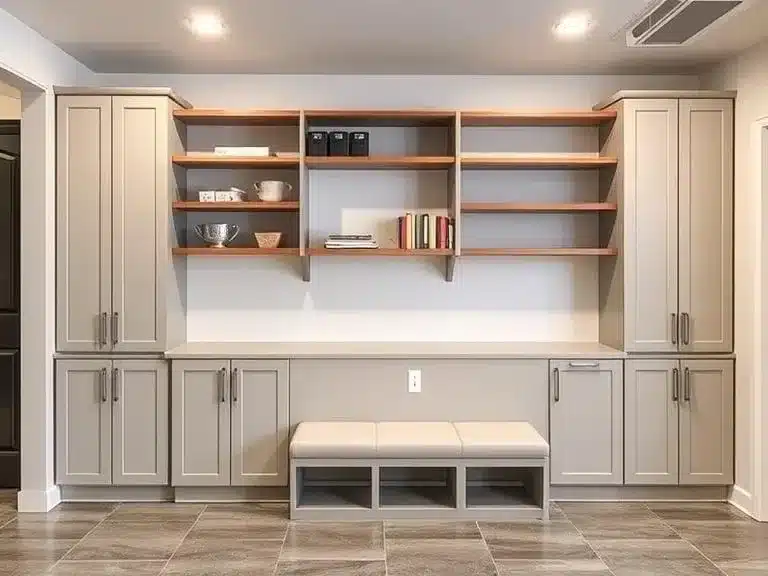
Even with a finished basement, clutter can quickly take over. Smart storage solutions help maximize space and keep things tidy.
Built-in & Wall-Mounted Storage
- Floating shelves – Perfect for books, décor, or collectibles.
- Wall-mounted cabinets – Great for keeping things hidden and organized.
- Storage benches – Dual-purpose seating with hidden compartments.
For a sleek look, consider modular storage units that fit seamlessly into your basement’s design.
Multi-Purpose Furniture
- Fold-out sofas – Great for guest rooms or entertainment spaces.
- Ottomans with storage – Stylish and functional.
- Murphy beds – Save space while adding an extra sleeping area.
A pegboard wall organizer is also a great DIY option for keeping tools, workout gear, or hobby supplies in order.
8. Final Touches & Decorations

Now that your basement is functional, it’s time to add personal touches to make it feel cozy and inviting.
Painting & Wall Décor
- Use light-colored paints to brighten up the space.
- Hang artwork, mirrors, or framed prints for style.
- Consider removable wallpaper for a quick, easy design upgrade.
Furniture & Comfort
- Add soft rugs for warmth.
- Use cozy couches and bean bags for a relaxing vibe.
- Layer throw pillows and blankets for extra comfort.
Smart Tech & Entertainment
- Install a projector or smart TV for a home theater.
- Use smart LED strip lights to set the mood.
- Add a Bluetooth speaker system for music or movie nights.
With these final touches, your DIY basement renovation is complete! Now, you have a stylish, functional space to enjoy.
Conclusion
A DIY basement renovation can completely transform your home, adding both space and value. By planning properly, waterproofing, choosing the right materials, and adding smart storage and decor, you can create a functional and stylish area that suits your needs.
Whether you’re building a cozy retreat, a home office, or an entertainment space, these tips will help you get the job done efficiently. Take your time, follow the steps, and enjoy the process!
Thanks for reading! Hope this guide helps you create the perfect basement. Happy renovating! 🚀
FAQs
How do I prevent moisture problems in my basement renovation?
Start by sealing any cracks in the walls and floors with waterproofing sealants. Install a sump pump if flooding is a concern, and use a dehumidifier to keep humidity levels low. Proper insulation and ventilation also help prevent moisture buildup.
What is the best type of flooring for a basement?
The best options are vinyl plank flooring, epoxy coatings, and laminate with a moisture barrier. These materials handle moisture well and are easy to maintain. Avoid hardwood, as it can warp due to basement humidity.
Do I need a permit for a DIY basement renovation?
It depends on your local building codes. If you’re making structural changes, adding electrical wiring, or installing plumbing, you may need a permit. Check with your local authorities before starting your renovation.
How can I make my basement feel brighter?
Since basements lack natural light, use recessed LED lights, track lighting, and wall sconces. Light-colored walls, mirrors, and smart LED strip lights can also help brighten up the space.
Recent Posts
- 10 Best Nesting Tables for Small Spaces and Apartments
- 10 Best Ladder Bookshelves for Stylish Home Organization
- 9 Best Storage Trunks for Home Organization and Style
- 10 Best Room Dividers for Privacy and Stylish Spaces
- 11 Best Bar Carts for Entertaining Guests in Style
- 10 Best Decorative Accent Cabinets for Stylish Home Storage
- 9 Best Convertible Futons and Sofa Beds for Small Apartments
- 10 Best Modular Furniture Sets for Flexible and Functional Living
- 10 Best Cube Storage Units for Organized and Stylish Homes
- 9 Best Closet Organizer Systems for Maximizing Your Space
- 10 Best Murphy Beds and Wall Beds for Small Guest Rooms
- 15 Best Folding Furniture Pieces for Small Apartments and Studios
- 12 Best Storage Ottomans for Small Spaces and Apartment Living
- 9 Best Activity Tables for Kids for Fun and Learning
- 9 Best Kids’ Dressers for Organized Bedrooms

